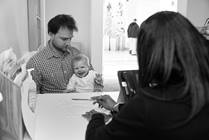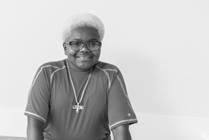Search Results
Viewing: 7351-7360 of 11765 | All

Specialty
Fertility and Reproductive Health Program
Many medical conditions and treatments may affect future fertility. Our comprehensive program provides education and counseling for patients who may be at risk for long-term fertility or reproductive health issues and provide fertility preservation options.

Specialty
Leukodystrophy Clinic
The Leukodystrophy Clinic provides evidence-based, family-centered clinical care for infants, children and teens with inherited white matter disorders (leukodystrophies). Our goal is to enhance quality of life for children and their families impacted by these conditions through a supportive clinical framework in collaboration with families, a local multidisciplinary team and the national community of the Leukodystrophy Care Network (LCN).

Specialty
Hematology and Oncology Outpatient Clinic
The Hematology and Oncology Outpatient Clinic is designed to be a link between the family, home and the hospital.
Meet Our Faculty
Meet our urology fellowship faculty team.

Gastroenterology Fellowship
The Pediatric Gastroenterology Fellowship educates the next generation of academic pediatric gastroenterologists to practice innovative, evidence-based, multidisciplinary medicine through clinical and basic science scholarly work.

Specialty
Aerodigestive Disorders Clinic
The Aerodigestive Disorders Clinic offers a coordinated team approach to care for children with chronic and complex disorders of the upper airway (pharynx and larynx), the lower airway (trachea, bronchi and lungs) and upper digestive tract (esophagus and stomach).
Specialty
Pediatric Thyroid Program
The Pediatric Thyroid Program at Nationwide Children’s Hospital offers comprehensive care for all thyroid diseases in children and adolescents.

Specialty
The Kidney and Urinary Tract Center
The Kidney and Urinary Tract Center is a collaborative, integrated process designed to combine patient care, advocacy, research, and training to develop the next generation of nephrology and urology treatment for children.


